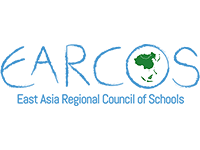As KIST, we believe that the language, customs, traditions and cultural beliefs of our host country, Japan, serve as an important resource in enriching the learning experience and improving Japanese language learning. In line with this belief, as well as the IB requirement for study of a second language, Japanese language learning at KIST focuses on developing linguistic strength, cultural awareness and communicative confidence in all learners to empower them to express themselves independently in their daily lives in Tokyo and enhance their experience of Japanese traditions, events, holidays, arts, foods and more both while they are at KIST and in the future, whether in Japan or in any country around the world.

Click here for information about Japanese cultural celebrations at KIST…
Elementary School
In the Elementary School at KIST, two levels of Japanese language classes are offered for students in K3: Beginner and Advanced; and three levels for students from Grades 1 to 5: Beginner, Intermediate and Advanced. The Beginner course is aimed at students who have limited or no experience with the Japanese language, while the Intermediate course is mainly designed for students who have a grasp of the Japanese language but are still second-language learners. The Advanced course is equivalent to the Japanese first language courses taught in Japanese elementary schools (called “kokugo” in Japanese) and is intended for native or highly proficient Japanese speakers. Learners in the Beginner class focus on learning the basics of Japanese communication, reading and writing; learners in the Intermediate class develop their skills in Japanese expression, reading comprehension and grammar; and learners in the Advanced class study the same kanji characters, literature, writing forms and other linguistic elements that students in Japanese elementary schools learn.
Students are placed into the Japanese course that best fits their level when they join the school or progress to K3. Their progress is consistently monitored by their teachers, and they may be moved up to the next level when they demonstrate that they have gained a higher level of proficiency than is expected for their current course.
In K1 and K2, Japanese languages lessons are delivered in a direct manner to each class as a whole to provide an immersive language and cultural experience, with English used for support as required. Native Japanese teachers engage the children in Japanese picture books, songs, fingerplay, arts and crafts, traditional cultural experiences, holiday celebrations and more, allowing both experienced Japanese speakers and beginners to gain fluency in both Japanese language and culture.
Students in Grades 1 through 5 study Japanese four periods a week, while students in K1 to K3 have Japanese lessons three times a week.
Secondary School
In Secondary School Grades 6–10 (IB MYP/IGCSE), five levels of Japanese are offered: Language Acquisition Level 1–5 and Japanese Language and Literature.
The Language Acquisition courses are intended for students learning Japanese as a second language at varying levels of proficiency, with Level 1 indicating the most basic level and Level 5 indicating students who are highly proficient but not fluent.
Japanese Language and Literature is the Japanese equivalent of the English course studied in Grades 6–10, English Language and Literature. In other words, the course is intended for native or near-native Japanese speakers for whom the focus is not acquisition of linguistic skills for communication, but rather development of literary analysis, poetry and deeper understanding of Japanese texts. The curriculum used is equivalent to a Japanese (or “kokugo”) lesson in Japanese schools and the curricula include study of the same kanji characters as the equivalent grade level in Japanese schools and reading of the same books, novels, poems and the like. Students in these courses also learn to analyze grade-level literature and develop skills to write high-level academic papers in Japanese.
Students in Grades 6–8 (MYP) study Japanese for four periods a week, and those in Grades 9 and 10 (IGCSE) have three periods a week.
In Grades 11 and 12 (IB DP), three levels are available: Japanese Language ab initio*, Japanese B: Language Acquisition, and Japanese A: Language and Literature. Japanese Language ab initio is intended for beginning learners with limited knowledge of the Japanese language; Japanese B: Language Acquisition focuses on content for proficient Japanese learners who are studying Japanese as a second language; and Japanese A: Language and Literature is an advanced language course for native or highly proficient students who are confident conducting analysis of literature, poetry and non-fiction and writing detailed, structured essays and papers in Japanese. Like the Japanese Language and Literature course available in Grades 6–10, the Japanese A course in the DP is the Japanese equivalent of the English A: Language and Literature course that all students take at KIST; in other words, it is a “first language” class rather than a course for developing fluency in a “second language.”
* DP course offerings are dependent on the interest level and enrollment of Grade 10 students in the school year prior to the commencement of the DP in Grade 11. As such, there are DP cohorts for which KIST does not offer Japanese Language ab initio.
The number of hours per week studied in the DP depends on the level at which the student is taking the course (standard level or higher level). More information regarding the hours studied for each course in the DP is available on the IB’s official website at http://www.ibo.org.

Click here for more information about the structure of the DP and course offerings at KIST…
Japanese language learning FAQ
My children have never studied Japanese before and are new to Japan. Will they be able to become fluent in Japanese during their time at KIST?
Language learning depends on a large variety of factors, including but not limited to, the student’s home language and its level of linguistic similarity or dissimilarity to Japanese, student motivation, home environment, out of school interests, number of years the student will be enrolled at KIST etc. KIST aims to provide a very strong Japanese language program that quickly and effectively develops competent communication skills and linguistic ability even in beginners. This can be observed in our graduating DP students; 100% of KIST DP students routinely earn either a 6 or a perfect score of 7 on the DP Japanese exam.

Click here to view Japanese and other DP results on our school profile…
The way your child interacts with Japanese language outside of school, however, is equally important. Encouraging your child to watch Japanese television programs, read simple Japanese books or comics, help you with reading Japanese signs and instructions, speak with cashiers or other service staff in their daily lives, arrange play dates with native Japanese-speaking classmates and other methods of incorporating Japanese into their real lives is crucial to the development of Japanese fluency on top of the approximately four hours a week that students spend learning Japanese at school.
My child is a native Japanese speaker, and I would like them to maintain Japanese fluency. Will the Japanese courses at KIST provide support for this?
As explained in the above sections, KIST offers a Japanese course that is equal to the Japanese “kokugo” classes taught in Japanese schools for native and near-native learners. In these courses, young learners will study the same kanji characters, vocabulary and literacy skills that they would in a Japanese school, moving up to focus on analysis of literature and poetry in Japanese, competency on polite Japanese speech, skills for writing effective essays in a variety of formats, etc. for older students. These courses prepare native speakers to go on to have bilingual success in their tertiary education; while it is not common, some KIST graduates choose to attend partially or fully Japanese university programs after they graduate from KIST.

Click here for more information about our students’ post-secondary education…
However, the main difference between native speakers learning in Japanese schools versus an international school with a strong Japanese language program is the lack of study of vocabulary used in other subject areas. Mathematics, sciences and humanities all rely on highly specific terminology for study at a higher level that is not covered in these courses when taught in English. Therefore, we recommend that students looking to strengthen their Japanese in specific subject areas engage in outside research, such as reading relevant books or articles in Japanese about the subject in which they are interested. Japanese language teachers at KIST are always happy to further support students wherever possible.







